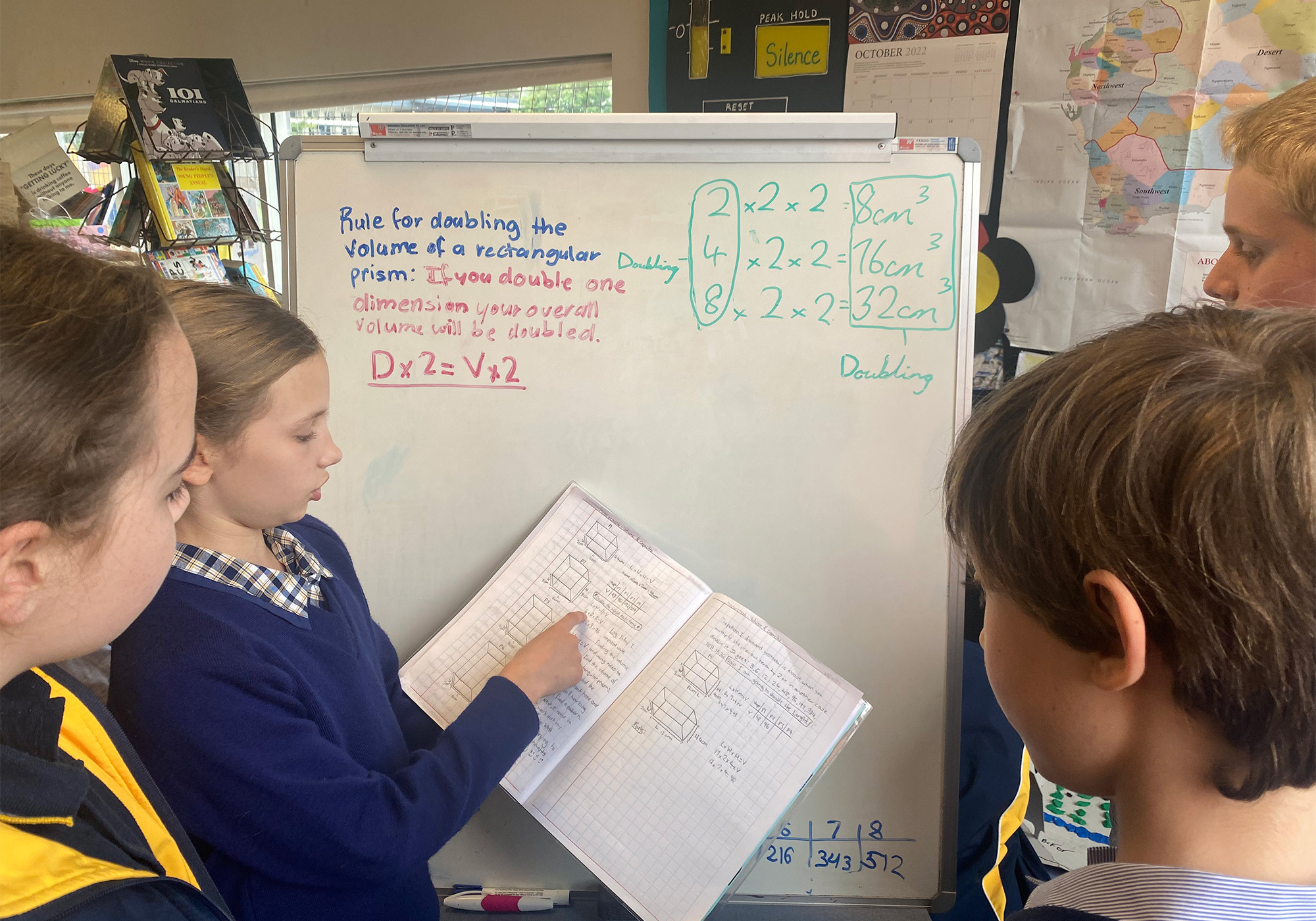In curriculum documents published in May 2022, the Australian Government Department of Education stated that overcoming the widening gap between knowledge generated in schools and skills demanded by employers and individuals requires a focus on a STEM (Science, Technology, Engineering and Mathematics) education that incorporates the development of 21st century skills – critical thinking, creativity, cultural awareness, collaboration and problem-solving.
Well, the Year 5s have been doing this in spades! In our recent measurement investigation, students made many hypotheses about the volumes of a wide range of rectangular prisms. They then gathered and organised data to prove or disprove their theories, identify patterns and develop rules for calculating volume and capacity in more efficient ways.
Students engaged in collaboration, critical thinking and problem-solving to mathematically articulate, question and justify their methods to each other. They developed their learning culture awareness by understanding that a strategy that is efficient for one person may not yet be efficient for another since everyone’s understandings develop differently. In addition, for a method to be ‘efficient’ it needs to be both understood and accurate for the individual. Strategies we have developed include filling boxes with centimetre cubes and counting them, skip counting the layers of area over the base, multiplying the bottom layer by the height/depth, or using wonderful rules that we made ourselves from the patterns we found e.g. Length x Width x Depth = Volume, Capacity = Length x Width x Depth, and Area of Base x Height = Volume.
Students wrote reflectively about their work, using mathematically specific language, evaluating personal achievement and identifying future goals:
“I work out the volume of a rectangular prism by using my ruler to measure the length, width and height and times it to make the volume! It’s a pretty simple way of going. When you’re doing the multiplication, I don’t think it matters the order. I want to test that out.”
“I think testing out the boxes with little blocks is a waste of time for me. I know it’s kind of helpful to see if you got it correct, but if your object is really big or if the length is like mine (length of 10.9cm x width of 2.8 cm x height of 6.35 cm) then it’s going to get a bit confusing.”
“I was checking the capacity that someone wrote on a little box, but I didn’t think it made sense because my box was smaller and they had an even smaller amount on theirs. So we checked theirs and I was right. We wrote the right amount on it, but I didn’t rub out the other answer because I remembered we value changes in thinking, so we just put a neat line through it so you could still read it.”
The beauty of using Inquiry like this to learn STEM, is that students not only develop a profound understanding (of the rules for volume for example) – so profound that they can synthesise their rules for more complex work in the future, but students are also simultaneously growing their 21st century skills – all while learning to see themselves as knowledgeable mathematicians who are empowered to contribute to the world’s future!
Rebecca Geue
Year 5 Teacher


